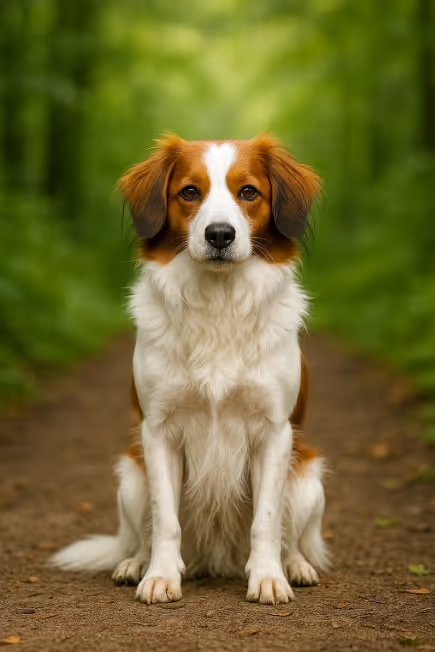The Nederlandse Kooikerhondje is a cheerful, fox-faced, spaniel-type gun dog developed to lure ducks into decoys using its white-tipped plume tail. Affectionate, sensitive, and clever, “Kooikers” bond closely with their people and thrive on training games, moderate daily exercise, and calm, consistent handling. If you’re searching “Are Kooikerhondjes good apartment dogs?”—yes, for active owners who meet their exercise and enrichment needs. “Do Kooikerhondjes shed?”—moderately, with seasonal coat blows.

Originating in the Netherlands, the Kooikerhondje worked in eendenkooi (duck decoy ponds). Handlers used the dog’s jaunty, white-tipped tail and animated movement to “toll” ducks down a narrowing canal into trap nets. Portraits from the 16th–17th centuries show similar small red-and-white spaniels. After near extinction in the 20th century, fanciers revived the breed; today it’s recognized internationally and valued as a lively companion and sport dog (obedience, agility, rally, scent work) that still carries its unique “decoy” heritage.
A small-to-medium, lightly built spaniel-type with a silky, weather-resistant coat and expressive “earrings.”
Generally easy-care, but plan for seasonal sheds and feather maintenance.
A nimble worker with moderate stamina—mix movement with brain work.
Bright, sensitive, and people-focused—keep it positive and predictable.
Feed for a lean, athletic outline and glossy coat.
Generally healthy, with a few breed-associated issues to screen for.
Still uncommon in Canada—plan ahead and verify health testing.
Are Nederlandse Kooikerhondjes good apartment dogs?
Yes—if you provide about 60 minutes of daily exercise plus training and enrichment.
Do Kooikerhondjes shed?
Yes—moderately, with seasonal coat blows; regular brushing helps.
Are Kooikerhondjes hypoallergenic?
No. They are not hypoallergenic.
What are the “earrings” on a Kooikerhondje?
Black tips/fringes on the ears—highly desired and part of the breed’s hallmark look.
How much exercise does a Kooikerhondje need?
Around 60 minutes daily plus brain work (nose games, tricks, rally/obedience).
Are Kooikerhondjes good with kids and other pets?
Generally affectionate family dogs; supervise with small pets and teach calm interactions.
Kooikerhondje vs Brittany—what’s different?
Kooikers are smaller, red-and-white with a white tail tip and “earrings,” and often more sensitive/reserved; Brittanys are larger, broader-going bird dogs.
What health tests should breeders do?
vWD Type III DNA, ENM DNA (where available), hips/patellas, and CAER eye exams—ask to see documentation.
Do Kooikerhondjes bark a lot?
Moderate. They’re alert; teach a solid “quiet” and provide exercise/enrichment.